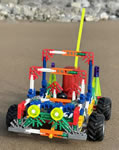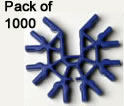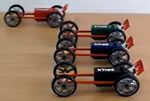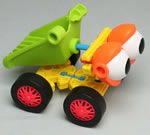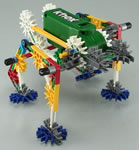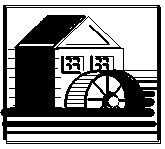
Water Wheel challenge
Water has been used as a source of power for many centuries. In the olden days, many water wheels were built, and used for purposes such as grinding corn. Could you make a model of a water wheel?
Levels of difficulty:
Level 1 - Make a simple model of a water wheel on the side of a model building
Level 2 - Make a water wheel that can be turned with running water
Level 3 - As level 2, and the wheel turning makes a millstone go round and round
Equipment: K’NEX set.
Test area: For level 2, a source of running water in a waterproof area to test the waterwheel
Approach: What shape is a water wheel? How could you make one out of K’NEX? What shape will your building be? How can you attach the wheel to it? For level 2, how can you improve your water wheel so that it can be turned by running water? Will it be an ‘undershot’ wheel (the water flows under the wheel) or an ‘overshot’ wheel (the water flows over the top of the wheel and down into the buckets). How much water do you need to make the wheel turn? For level 3, how can you make the wheel turn an axle inside the building? Can you then make the axle turn a millstone?
Handy Hints (please click to view):
A2 - 3 ways to connect K'NEX rods and connectors
A4 - Making corners with blue & purple connectors
W6 - Making rods turn with wheels or connectors
W7 - Pulleys
W8 - Stub axles
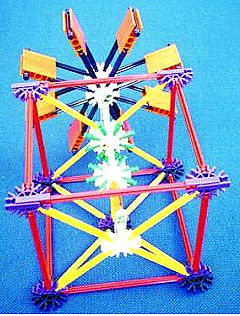
Teachers' Notes
An interesting project to make the force of running water turn a wheel, and (for level 3) a millstone.
Possible solution: See photo.
Before starting: Look at pictures of water wheels and millstones, and if possible visit a working water wheel.
Conclusion: Firstly, see which design is most efficient, in that it works with the smallest flow of water. Then ask the children to draw diagrams of their models, showing how the force of the water causes the various components to turn.
Copyright © Andy Shercliff 1996 and K'NEX User Group 2004

